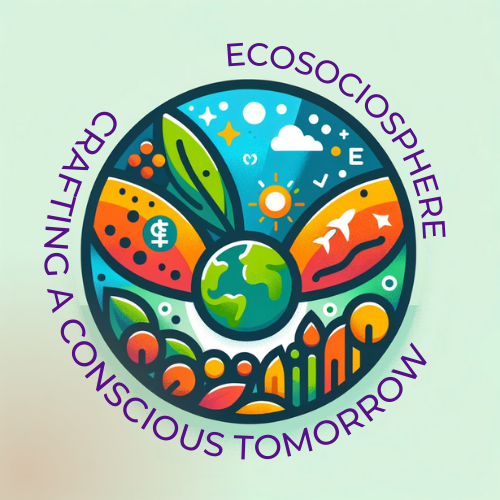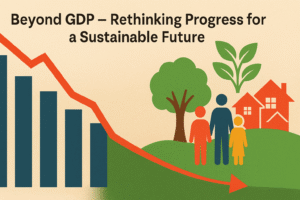Fun Fact: The word “Brutalism” comes from the French term béton brut, meaning “raw concrete” — and today, it’s getting an eco-friendly makeover!
Once dismissed as cold and harsh, Brutalism — the mid-20th-century architectural style characterised by heavy concrete structures — is experiencing an unexpected revival. But it’s not coming back unchanged. Welcome to the era of Eco-Brutalism: Merging Industrial Design with Sustainable Living — where the raw, rugged beauty of concrete meets lush greenery, smart energy solutions, and sustainable ethics.
In a world fighting against climate change, rising urban density, and resource scarcity, Eco-Brutalism is an architectural rebellion: a bold statement that sustainability doesn’t have to look soft or sanitised. It can be bold. It can be raw. And, dare we say, it can be beautiful.
The Brutal Beginnings
Let’s start at the roots. Brutalism originally emerged after World War II as a practical solution for rebuilding devastated cities. It was cheap, durable, and honest. Architects like Le Corbusier (a Swiss-French pioneer of modern architecture) saw Brutalism as a form of social housing that stripped away decorative nonsense in favour of functional beauty.
Yet, decades later, many people began to criticise Brutalist buildings for being “cold,” “soulless,” or even “oppressive.” Towers of concrete loomed over urban landscapes, often associated with decay and dystopia.
Now, fast forward to 2025: the planet is gasping under the weight of consumerism and unsustainable practices. And strangely, the same Brutalist principles of honesty and minimalism are offering a foundation for a greener future.
What is Eco-Brutalism?
Eco-Brutalism fuses the raw aesthetics of traditional Brutalism with green technologies, natural elements, and sustainable materials. Think massive concrete structures softened by vertical gardens, solar panels, rainwater harvesting systems, and recycled materials.
It’s not about disguising concrete; it’s about working with it — integrating brutal strength with ecological resilience.

Key Characteristics of Eco-Brutalism:
Raw Materials: Recycled concrete, timber, steel, and sustainable composites.
Greenery Integration: Living walls, rooftop gardens, and tree-lined facades.
Energy Efficiency: Solar panels, wind turbines, and passive cooling designs.
Water Management: Rainwater collection, grey water recycling, and sustainable drainage.
Minimalism with Purpose: Every design choice serves both aesthetic and environmental functions.
Why Eco-Brutalism Matters Today
The clock is ticking on climate change. The United Nations (UN) projects that by 2050, almost 68% of the global population will reside in urban areas. We need urban environments that not only house people but also heal the planet.
Eco-Brutalism offers:
Durability: Concrete lasts centuries.
Thermal Mass: Thick concrete walls regulate temperatures naturally.
Reduced Embodied Carbon: Using recycled materials and green concrete lowers environmental impact.
Urban Biodiversity: Living walls and rooftop gardens create habitats for pollinators and birds.
In short, Eco-Brutalism isn’t just a style — it’s a survival strategy.
Real-World Examples of Eco-Brutalism
Let’s ground this in reality. Some stunning examples are popping up around the world:
Bosco Verticale, Milan, Italy
Designed by architect Stefano Boeri, this “Vertical Forest” is two residential towers packed with over 900 trees and 20,000 plants. Concrete balconies serve as sturdy planters, creating a living, breathing ecosystem in the heart of Milan.
The Silo, Copenhagen, Denmark
A former grain silo transformed by the firm COBE Architects (an architecture firm specializing in urban development and design). It retains its raw concrete form while adding glass balconies, green terraces, and energy-efficient features.
One Central Park, Sydney, Australia
Developed by Frasers Property (a real estate development company focused on sustainable projects) and designed by Jean Nouvel, this project uses hydroponic walls and integrated solar panels to merge brutal structure with wild greenery.
Habitat 67, Montreal, Canada
Initially built for Expo 67 by architect Moshe Safdie, this modular housing complex is seeing a resurgence of interest. Current updates are integrating solar energy systems and community gardens into its bold concrete forms.
Challenges and Criticism
Of course, no movement is perfect. Eco-Brutalism has its critics. Some argue:
Concrete Production: Traditional concrete is carbon-intensive. However, newer “green concretes” made from fly ash or industrial by-products are mitigating this.
Cost of Green Additions: Installing and maintaining living walls and advanced technologies can come with high costs.
Perception Issues: Many people still associate raw concrete with poverty, decay, and dystopia, making public acceptance tricky.
Still, these challenges are being addressed through innovation, policy incentives, and, perhaps most importantly, changing tastes.
The Future: Eco-Brutalism 2.0?
Looking ahead, Eco-Brutalism may evolve further into “Biophilic Brutalism” — structures that don’t just incorporate plants but also mimic natural ecosystems in their design, function, and lifecycle.
Imagine buildings that regulate their own temperature like termite mounds, absorb carbon like forests, and heal themselves with living organisms. Science fiction? Not for long. Research labs worldwide, including Arup (an international engineering consultancy firm specialising in sustainable architecture) and universities like MIT (Massachusetts Institute of Technology), are already working on these technologies.
Conclusion
Eco-Brutalism forces us to rethink two critical ideas:
First, that strength and sustainability aren’t mutually exclusive.
Second, that beauty can be raw, rugged, and deeply connected to nature.
As cities swell and the climate crisis deepens, we have a choice. Will we continue building glass towers of indulgence? Or will we embrace a bold, brutal, and sustainable future?
In the end, Eco-Brutalism isn’t just about concrete and plants. It’s about building resilience in our cities, in our communities, and within ourselves.
Author’s Note
I wrote this piece with the hope that next time you walk by a massive concrete structure, you won’t just see grey walls — you’ll see potential: for life, for change, and for a greener world. Sometimes, the future grows from the most unexpected places.
G.C., Ecosociosphere contributor.




